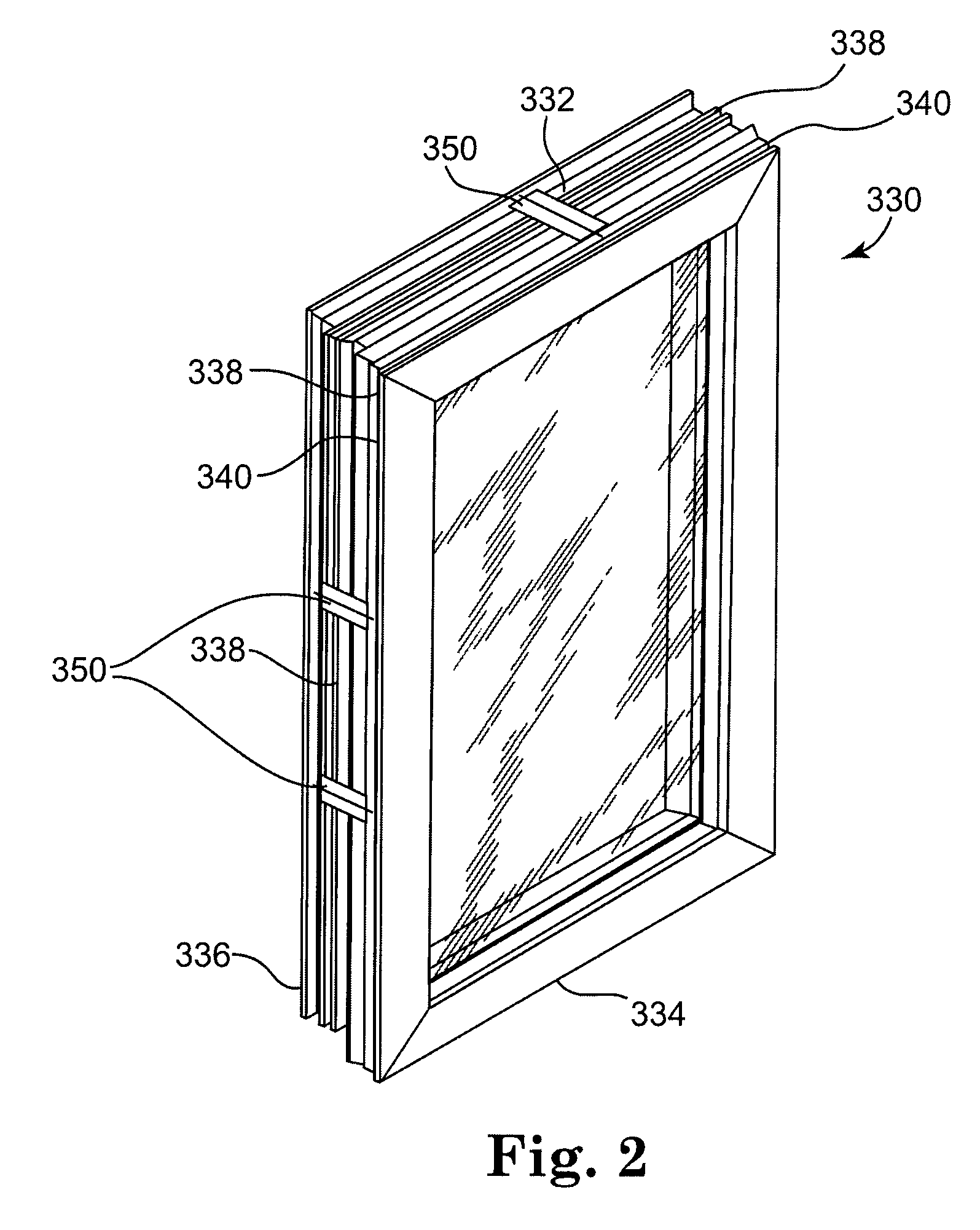Window installation method
a technology for installing windows and doors, applied in the field of closing assemblies, can solve the problems of difficult to use wood shims on rounded surfaces, time-consuming method of installing wood shims, and difficult to install wood shims, so as to reduce the time and cost of installing and increase the performance of the closure assembly
- Summary
- Abstract
- Description
- Claims
- Application Information
AI Technical Summary
Benefits of technology
Problems solved by technology
Method used
Image
Examples
Embodiment Construction
[0040]The present invention is directed to a system for installing a closure assembly in a rough opening. As used herein, “closure” and “closure assembly” refer to double-hung, casement, awning and fixed windows, skylights, sliding and hinged doors, and the like. As used herein, “rough opening” refers to an opening in a wall or structure that has a perimeter sized and shaped to receive the closure assembly, and a plurality of inner surfaces. As used herein, “inner surfaces” refers to the sill, header and jamb surfaces forming the rough opening in the structure. The rough opening extends from an interior side of the structure to an exterior side. The exterior side of the structure is typically exposed to rain, wind, snow, ice and the like, while the interior side is typically protected from the elements.
[0041]FIG. 1 illustrates a structure 22 that includes framing members 24, a sheathing layer 26 and a water resistant barrier 28. In another embodiment, the structure 22 is formed of a...
PUM
 Login to View More
Login to View More Abstract
Description
Claims
Application Information
 Login to View More
Login to View More - R&D
- Intellectual Property
- Life Sciences
- Materials
- Tech Scout
- Unparalleled Data Quality
- Higher Quality Content
- 60% Fewer Hallucinations
Browse by: Latest US Patents, China's latest patents, Technical Efficacy Thesaurus, Application Domain, Technology Topic, Popular Technical Reports.
© 2025 PatSnap. All rights reserved.Legal|Privacy policy|Modern Slavery Act Transparency Statement|Sitemap|About US| Contact US: help@patsnap.com



